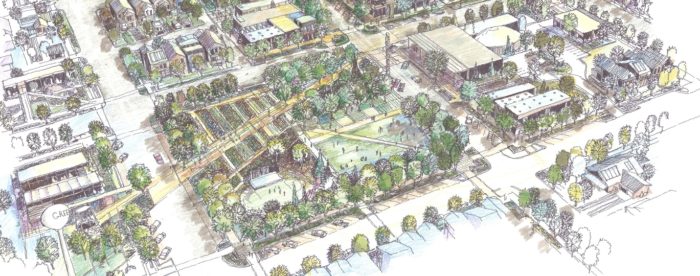Rather than buckle under to this enormous tragedy, the town came together, bound by residents’ common commitment to the environment, and protecting it for future generations. They used the disaster to rebuilt a new downtown, guided by Smart Growth principles. To their new mixed-use core, they added green space and recreational facilities, affordable housing and easy walking-distance access to parks, stores, city hall and the hospital.
The Greensburg plan to rebuild a more sustainable town was based on the commonsense principles of the prairie. Conserving precious natural resources, respecting the land and working in concert with it, harnessing the wind for energy — these attributes come naturally to the citizens of western Kansas. Steven Hardy, BNIM Planner, Project Manager

Many homes were rebuilt with hazard mitigation features designed to withstand 195 mile-per-hour wind. Publicly funded buildings were required to meet LEED Platinum certification, giving Greensburg one of the highest concentrations of green buildings per capita in the world.
Funding
FEMA
Implementation
- Crafting the Greensburg Sustainable Comprehensive Plan was a total-community effort – sustained by the close relationships and pride of place common in rural communities.
- Implementing the plan required collective action; all residents played a part. This “total community” approach continues to guide rebuilding and redevelopment efforts. And it provides the catalyst for healing and restoring the spirit needed to prepare for future disasters, and make Greensburg healthier, and stronger.

